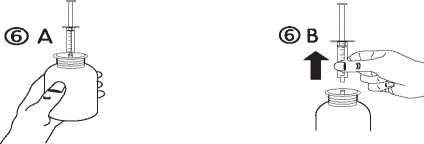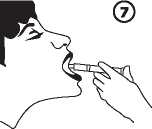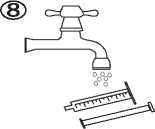Metformin Hydrochloride 500Mg/5Ml Oral Solution
L/l
o
Ul
SO
w
VJ1
o
o
oq
o

Thame Laboratories —

Thame Laboratories —
Read all of this leaflet carefully before you start taking this medicine because it contains important information for you.
► Keep this leaflet. You may need to read it again.
► If you have any further questions, ask your doctor or pharmacist.
► This medicine has been prescribed for you only. Do not pass it on to others. It may harm them, even if their signs of illness are the same as yours.
► If you get any side effects, talk to your doctor or pharmacist. This includes any possible side effects not listed in this leaflet. See section 4.
The name of your medicine is Metformin hydrochloride 500mg/5ml Oral Solution but will be referred to as 'Metformin' throughout this leaflet.
Warnings and precautions
What is in this leaflet:
1. What Metformin is and what it is used for
2. What you need to know before you take Metformin
3. How to take Metformin
4. Possible side effects
5. How to store Metformin
6. Content of the pack and other information
Metformin is a medicine to treat diabetes. It belongs to a group of medicines called biguanides.
Insulin is a hormone produced by the pancreas that makes your body take in glucose (sugar) from the blood. Your body uses glucose to produce energy or stores it for future use.
If you have diabetes, your pancreas does not make enough insulin or your body is not able to use properly the insulin it produces. This leads to a high level of glucose in your blood. Metformin helps to lower your blood glucose to as normal a level as possible.
If you are an overweight adult, taking Metformin over a long period of time also helps to lower the risk of complications associated with diabetes. Metformin is associated with either a stable body weight or modest weight loss.
Metformin is used to treat patients with type 2 diabetes (also called 'non-insulin dependent diabetes') when diet and exercise alone have not been enough to control your blood glucose levels. It is used particularly in overweight patients.
Adults can take Metformin on its own or together with other medicines to treat diabetes (medicines taken by mouth or insulin).
Children 10 years and over and adolescents can take Metformin on its own or together with insulin.
2. What you need to know before you take Metformin
Do not take Metformin if:
► you are allergic (hypersensitive) to metformin or any of the other ingredients of this medicine (listed in section 6)
► you have liver problems or kidney problems (glomerular filtration rate below 45 ml/min)
► you have uncontrolled diabetes, with e.g. severe hyperglycaemia (high blood glucose), nausea, vomiting, dehydration, rapid weight loss or ketoacidosis. Ketoacidosis is a condition in which substances called 'ketone bodies' accumulate in the blood and which can lead to diabetic precoma. Symptoms include stomach pain, fast and deep breathing, sleepiness or unusual fruity odour of the breath
► you have lost too much water from your body (dehydration), such as due to long-lasting or severe diarrhoea, or if you have vomited several times in a row. Dehydration may lead to kidney problems, which can put you at risk for lactic acidosis (see 'Warnings and Precautions' below)
► you have a severe infection, such as an infection affecting your lung or bronchial system or your kidneys. Severe infections may lead to kidney problems, which can put you at risk for lactic acidosis (see 'Warnings and Precautions' below)
► you are treated for acute heart failure or have recently had a heart attack, have severe problems with your circulation (such as shock) or have breathing difficulties. This may lead to a lack in oxygen supply to tissue which can put you at risk for lactic acidosis (see 'Warnings and Precautions' below)
► you drink a lot of alcohol.
If any of the above applies to you, talk to your doctor, before you start taking this medicine.
Make sure you ask your doctor for advice, if
► you need to have an examination such as X-ray or scan involving the injection of contrast medicines that contain iodine into your bloodstream
► you need to have major surgery.
You must stop taking Metformin for a certain period of time before and after the examination or the surgery. Your doctor will decide whether you need any other treatment for this time. It is important that you follow your doctor's instructions precisely.
PIL/UK/MFG025/04/v1
Please note the following particular risk of lactic acidosis.
Metformin may cause a very rare, but very serious complication called lactic acidosis, particularly if your kidneys are not working properly. The risk of developing lactic acidosis is also increased with uncontrolled diabetes, prolonged fasting or alcohol intake, body fluid deficit (dehydration) due to severe diarrhoea or vomiting, liver problems and any medical conditions in which a region of the body is deprived with a lack of oxygen supply (such as acute severe heart diseases).
It is important to you to comply with your medication intake, dietary instructions and regular exercise program because this can reduce the risk of lactic acidosis.
The onset of lactic acidosis can be subtle and the symptoms can be non-specific such as vomiting, abdominal pain with muscle cramps, a general feeling of not being well with severe tiredness, and difficulty in breathing. Further symptoms are reduced body temperature and heart beat. If you experience some of these symptoms, you should immediately seek medical attention, as lactic acidosis may lead to coma. Stop taking Metformin immediately and contact a doctor or the nearest hospital straight away.
Metformin on its own does not cause hypoglycaemia (a blood glucose level which is too low). However, if you take Metformin together with other medicines to treat diabetes that can cause hypoglycaemia (such as sulphonylureas, insulin, meglitinides), there is a risk of hypoglycaemia. If you experience symptoms of hypoglycaemia such as weakness, dizziness, increased sweating, fast heart beating, visions disorders or difficulty in concentration, it usually helps to eat or drink something containing sugar.
Other medicines and Metformin
If you need to have an injection of contrast medicines that contain iodine into your bloodstream, for example for examinations such as X-ray or scan, you must stop taking Metformin for a certain period of time before and after (at least 48hrs) the examination (see 'Make sure you ask your doctor for advice').
Tell your doctor if you take any of the following medicines and Metformin at the same time. You may need more frequent blood glucose tests or your doctor may adjust the dosage of Metformin:
► diuretics (used to remove water from the body by making more urine)
► beta-2 agonists such as salbutamol or terbutaline (used to treat asthma)
► corticosteroids (used to treat a variety of conditions, such as severe inflammation of the skin or in asthma)
► other medicines used to treat diabetes.
Tell your doctor or pharmacist if you are taking, have recently taken or might take any other medicines, including medicines obtained without a prescription including herbal medicines.
Metformin with food and drink
Do not drink alcohol when you take this medicine. Alcohol may increase the risk of lactic acidosis especially if you have liver problems or if you are undernourished. This also applies to medicines that contain alcohol.
in
Pregnancy and Breast-feeding
During pregnancy, you need insulin to treat your diabetes. Tell your doctor if you are pregnant, think you may be pregnant or are planning to have a baby, so that he or she may change your treatment.
This medicine is not recommended if you are breast-feeding or if you are planning to breast-feed your baby.
Driving and using machines
Metformin on its own does not cause hypoglycaemia (a blood glucose level which is too low). This means that it will not affect your ability to drive or use machines.
However, take special care if you take Metformin together with other medicines to treat diabetes that can cause hypoglycaemia (such as sulphonylureas, insulin, meglitinides). Symptoms of hypoglycaemia include weakness, dizziness, increased sweating, fast heart beat, vision disorders or difficulty in concentration. Do not drive or use machines if you start to feel these symptoms.
Metformin contains:
Methyl parahydroxybenzoate (E218): May cause allergic reactions (possibly delayed).
Liquid Maltitol: If you have been told by your doctor that you have an intolerance to some sugars, contact your doctor before taking this medicinal product. It may have a mild laxative effect. This medicinal product also contains 0.93mmol (21.46mg) sodium per dose of 5ml. To be taken into consideration by patients on a controlled sodium diet.
Always take this medicine exactly as your doctor has told you. Check with your doctor or pharmacist if you are not sure.
Metformin cannot replace the benefits of a healthy lifestyle. Continue to follow any advice about diet that your doctor has given you and get some regular exercise.
TURN OVER
Recommended dose
Children 10 years and over and adolescents usually start with 5ml (500mg) or 8.5ml (850mg) of Metformin once a day. The maximum daily dose is 20ml (2g) taken as 2 or 3 divided doses. Treatment of children between 10 and 12 years of age is only recommended on specific advice from your doctor, as experience in this age group is limited.
Adults usually start with 5ml (500mg) or 8.5ml (850mg) of Metformin two or three times a day. The maximum daily dose is 30ml (3g) taken as 3 divided doses.
In renal impaired patients with a glomerular filtration rate (GFR) between 45 and 60 ml/min, the starting dose is 5ml (500mg) or 8.5ml (850mg) Metformin, once daily. The maximum dose is 10ml (1g) daily, given as 2 divided doses. The renal function should be closely monitored (every 3 - 6 months).
If you take insulin too, your doctor will tell you how to start Metformin.
Monitoring
► your doctor will perform regular blood glucose tests and will adapt your dose of Metformin to your blood glucose levels. Make sure that you talk to your doctor regularly. This is particularly important for children and adolescents or if you are an older person.
► your doctor will also check at least once a year how well your kidneys work. You may need more frequent checks if you are an older person or if your kidneys are not working normally.
How to take Metformin
Take Metformin with or after a meal. This will avoid you having side effects affecting your digestion.
► if you take one dose a day, take it in the morning (breakfast)
► if you take two divided doses a day, take them in the morning (breakfast) and evening (dinner)
► if you take three divided doses a day, take them in the morning (breakfast), at noon (lunch) and in the evening (dinner).
If, after some time, you think that the effect of Metformin is too strong or too weak, talk to your doctor or pharmacist.
Route and Method of administration
This medicinal product must be taken orally.
Use the measuring syringe provided in the pack to deliver the required dose.
Instructions for the use of syringe:
1. Open the bottle: press the cap and turn it anticlockwise (figure 1).
2. Separate the adaptor from the syringe (figure 2). Insert the adaptor into the bottle neck (figure 3). Ensure it is properly fixed. Take the syringe and put it in the adaptor opening (figure 4).
If you have any further questions on the use of this medicine, ask your doctor or pharmacist.

Like all medicines, this medicine can cause side effects, although not everybody gets them. The following side effects may occur:
Lactic acidosis
Lactic acidosis is a very rare side effect (may affect up to 1 in 10,000 people) but a serious complication particularly if your kidneys are not working properly. Symptoms of lactic acidosis are non-specific such as vomiting, abdomina l pain with muscle cramps, a general feeling of not being well with severe tiredness, and difficulty in breathing. Further symptoms are reduced body temperature and heart beat. If you experience some of these symptoms, you should immediately seek medical attention, as lactic acidosis may lead to coma. Stop taking Metformin immediately and contact a doctor or the nearest hospital straight away.
Liver function
Abnormalities in liver function tests or hepatitis (inflammation of the liver; this may cause tiredness, loss of appetite, weight loss, with or without yellowing of the skin or whites of the eyes) are very rare side effects (may affect up to 1 in 10,000 people). If this happens to you, stop taking Metformin and talk to your doctor.
Digestive problems
Digestive problems, such as feeling sick (nausea), being sick (vomiting), diarrhoea, abdominal pain and loss of appetite are very common side effects (may affect more than 1 in 10 people). These side effects most often happen at the beginning of the treatment with Metformin. It helps if you spread the doses over the day and if you take Metformin with or straight after a meal.
If symptoms continue, stop taking Metformin and talk to your doctor.
Common side effects (in less than 1 in 10 people)
► changes in taste.
Very rare side effects (in less than 1 in 10,000 people)
► skin reactions such as redness of the skin (erythema), itching or an itchy rash (hives)
► low vitamin B12 levels in the blood.
Children and adolescents
Limited data in children and adolescents showed that side effects were similar in nature and severity to those reported in adults.
Reporting of side effects
If you get any side effects, talk to your doctor or pharmacist. This includes any possible side effects not listed in this leaflet. You can also report side effects directly via the Yellow Card Scheme at www.mhra.gov.uk/yellowcard.
By reporting side effects you can help provide more information on the safety of this medicine.
3. Turn the bottle upside down. Fill the syringe with a small amount of solution by pulling the piston down (figure 5A), then push the piston upwards in order to remove any possible bubble (figure 5B). Pull the piston down to the graduation mark corresponding to the quantity in millilitres (ml) prescribed by your doctor (figure 5C).

4. Turn the bottle the right way up (figure 6A). Remove the syringe from the adaptor (figure 6B) and leave the syringe adaptor in place after first use.

5. Empty the contents of the syringe into the patient's mouth by pushing the piston to the bottom of the syringe (figure 7). Close the bottle with the plastic screw cap. Wash the syringe with water (figure 8).


If you take more Metformin than you should
If you have taken more Metformin than you should have, you may experience lactic acidosis. Symptoms of lactic acidosis are non-specific such as vomiting, abdominal pain with muscle cramps, a general feeling of not being well w ith severe tiredness, and difficulty in breathing.
Further symptoms are reduced body temperature and heart beat. If you experience some of these symptoms, you should immediately seek medical attention, as lactic acidosis may lead to coma. Stop taking Metformin immediately and contact a doctor or the nearest hospital straight away.
If you forget to take Metformin
If you forget a dose, take it as soon as you remember. However, if it is nearly time for the next d ose, skip the missed dose.
Do not take a double dose to make up for a forgotten dose.
Take the next dose at the usual time.
PIL/UK/MFG025/04/v1
► Keep this medicine out of the sight and reach of children.
► Do not use this medicine after the expiry date which is stated on the carton and bottle label after 'Exp'. The expiry date refers to the last day of that month.
► Store in a refrigerator (2°C - 8°C).
► Discard 30 days after first opening.
► Do not take this medicine if you notice that the solution becomes discoloured or shows any signs of deterioration. Seek the advice of your pharmacist.
► Do not throw away any medicines via wastewater or household waste. Ask your pharmacist how to throw away medicines you no longer use. These measures will help protect the environment.
What Metformin contains
The active substance is metformin hydrochloride.
Each 1ml of oral solution contains 100mg metformin hydrochloride.
The other ingredients are: methyl parahydroxybenzoate (E218), sodium dihydrogen phosphate monohydrate, disodium phosphate anhydrous, liquid maltitol, acesulfame potassium (E950), erythrosine (E127), strawberry flavour [contains propylene glycol (E1520)] and purified water.
What Metformin looks like and contents of the pack
Metformin is a clear, pink colour solution with strawberry odour supplied in an amber glass bottle with tamper-evident child resistant plastic screw cap and a 10ml oral syringe with 0.5ml graduation marks for measuring the dose.
Metformin is supplied in bottles containing 150ml solution.
POM
Marketing Authorisation Holder
Thame Laboratories Unit 4, Bradfield Road,
Ruislip, Middlesex,
HA40NU, UK
This medicinal product is authorised in the Member States of the EEA under the following names:
UK and MT: Metformin hydrochloride 500mg/5ml Oral Solution
This leaflet was last revised in 10/2016.
5
C
5 5 9 3 5
1 0 0
0 1